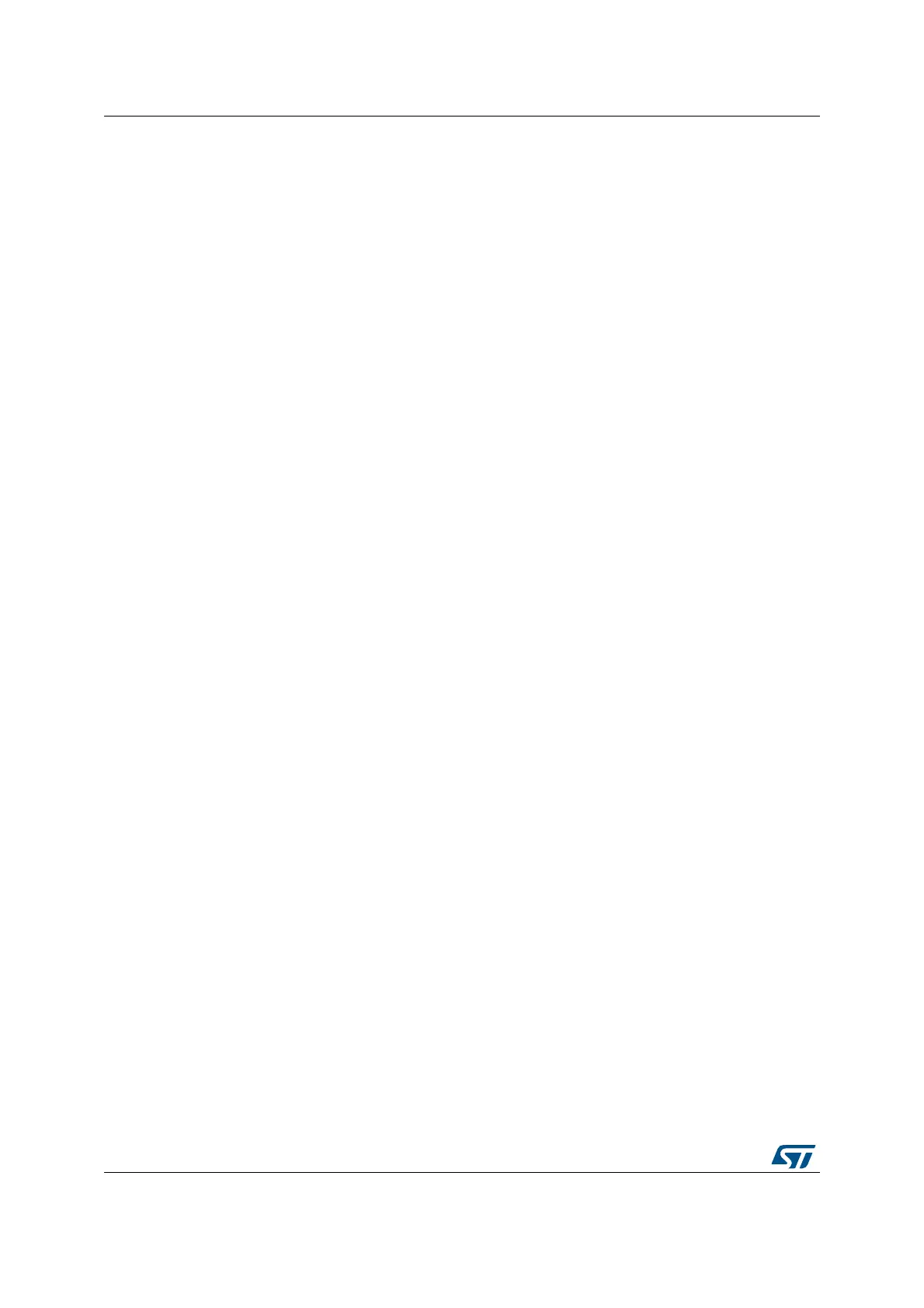Power control (PWR) RM0440
232/2126 RM0440 Rev 4
RTC functional description on page 1540)
• PA0/RTC_TAMP2 and PE6/RTC_TAMP3 when they are configured by the RTC as
tamper pins
Note: Due to the fact that the analog switch can transfer only a limited amount of current (3 mA),
the use of GPIO PC13 to PC15 in output mode is restricted: the speed has to be limited to
2 MHz with a maximum load of 30 pF and these I/Os must not be used as a current source
(e.g. to drive a LED).
When the backup domain is supplied by V
BAT
(analog switch connected to V
BAT
because
V
DD
is not present), the following functions are available:
• PC13, PC14 and PC15 can be controlled only by RTC or LSE (refer to Section 35.3:
RTC functional description on page 1540)
• PA0/RTC_TAMP2 and PE6/RTC_TAMP3 when they are configured by the RTC as
tamper pins
Backup domain access
After a system reset, the backup domain (RTC registers and backup registers) is protected
against possible unwanted write accesses. To enable access to the backup domain,
proceed as follows:
1. Enable the power interface clock by setting the PWREN bits in the Section 7.4.17:
APB1 peripheral clock enable register 1 (RCC_APB1ENR1)
2. Set the DBP bit in the Power control register 1 (PWR_CR1) to enable access to the
backup domain
3. Select the RTC clock source in the RTC domain control register (RCC_BDCR).
4. Enable the RTC clock by setting the RTCEN [15] bit in the RTC domain control register
(RCC_BDCR).
VBAT battery charging
When VDD is present, It is possible to charge the external battery on VBAT through an
internal resistance.
The VBAT charging is done either through a 5 kOhm resistor or through a 1.5 kOhm resistor
depending on the VBRS bit value in the PWR_CR4 register.
The battery charging is enabled by setting VBE bit in the PWR_CR4 register. It is
automatically disabled in VBAT mode.
6.1.4 Voltage regulator
Two embedded linear voltage regulators supply all the digital circuitries, except for the
Standby circuitry and the backup domain. The main regulator output voltage (V
CORE
) can be
programmed by software to two different power ranges (Range 1 and Range 2) in order to
optimize the consumption depending on the system’s maximum operating frequency (refer
to Section 7.2.8: Clock source frequency versus voltage scaling and to Section 3.3.3: Read
access latency.
The voltage regulators are always enabled after a reset. Depending on the application
modes, the V
CORE
supply is provided either by the main regulator (MR) or by the low-power
regulator (LPR).
• In Run, Sleep and Stop 0 modes, both regulators are enabled and the main regulator

